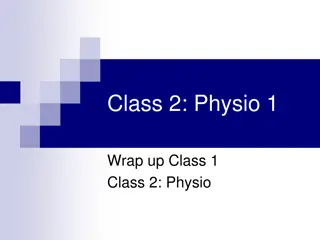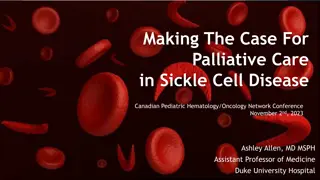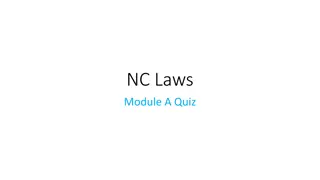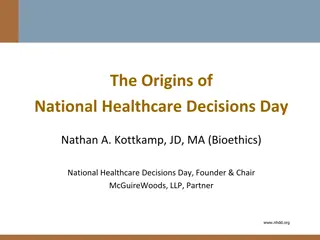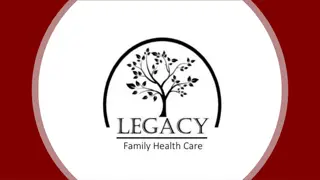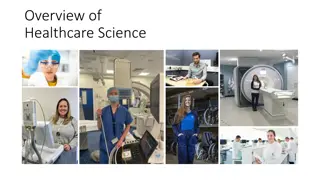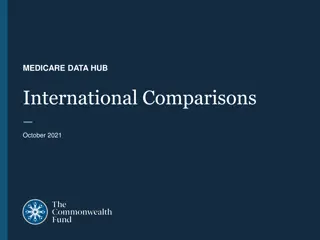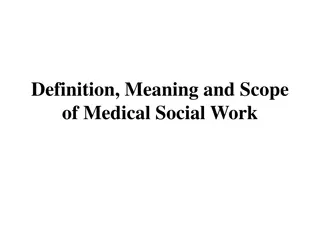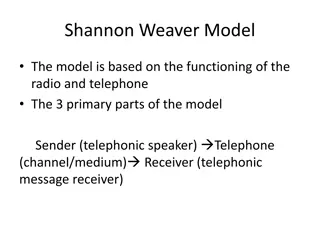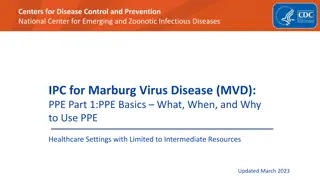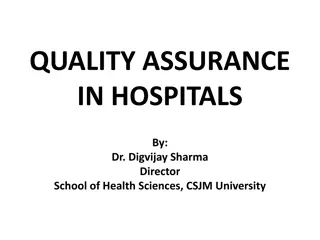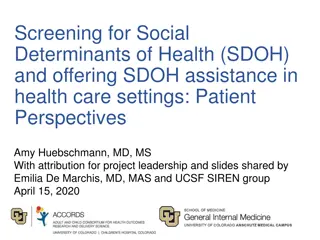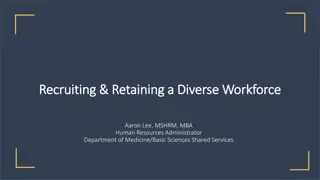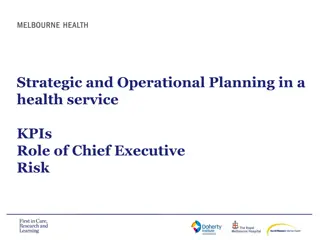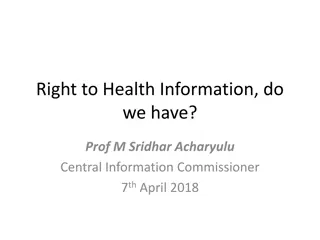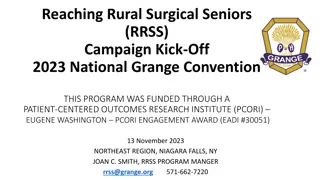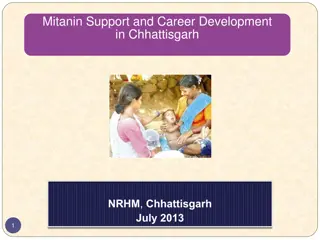Understanding the Biopsychosocial Model of Healthcare: Insights from Dr. Caryl Sibbett
Exploring the biopsychosocial model of healthcare through the work of Dr. Caryl Sibbett at Kairos Consultancy in 2020. This model emphasizes the interconnected aspects of biology, psychology, and social factors in understanding and treating disease. It challenges the dominance of the biomedical model and calls for a holistic approach to health and wellness, considering the patient's social context, mental well-being, and physical health.
Download Presentation

Please find below an Image/Link to download the presentation.
The content on the website is provided AS IS for your information and personal use only. It may not be sold, licensed, or shared on other websites without obtaining consent from the author. Download presentation by click this link. If you encounter any issues during the download, it is possible that the publisher has removed the file from their server.
E N D
Presentation Transcript
Biopsychosocial model of healthcare 01/05/20 Dr Caryl Sibbett Art Psychotherapist (HCPC Reg.). BACP Reg. Senior Accredited Psychotherapist. Sen. Lecturer (Ret d). Dr Caryl Sibbett, Kairos Consultancy 2020
On the MSc Art Psychotherapy we are committed to an integrative model of wellbeing that embraces the biopsychosocial model (Engel, 1977) and the biopsychosocial-spiritual dimensions (Sulmasy, 2006) of healthcare. Dr Caryl Sibbett, Kairos Consultancy 2020 3
What causes disease / illness? How do you treat disease / illness? Who is responsible for this? Dr Caryl Sibbett, Kairos Consultancy 2020 4
What causes mental illness? How do you treat mental illness? Relationship between: Mind (psyche), body (soma), context? Dr Caryl Sibbett, Kairos Consultancy 2020 5
(bio)medical model Dominant model of disease = biomedical; leaving no room for social, psychological, behavioural dimensions of illness. (Engel, 1977, p.135) The biomedical model of health and disease dominates in current medical practice. The model attributes key role to biological determinants and explains disease as a condition caused by external pathogens or disorders in the functions of organs and body systems. (Havelka, Lucanin & Lucanin, 2009, abstract) Dr Caryl Sibbett, Kairos Consultancy 2020 6
biopsychosocial model George L. Engel (1977) To provide a basis for understanding the determinants of disease and arriving at rational treatments and patterns of health care, a medical model must also take into account the patient, the social context in which he lives the physician s role and the health care system. This requires a biopsychosocial model. (Engel, 1977, p.132) Dr Caryl Sibbett, Kairos Consultancy 2020 7
biopsychosocial model The extension of biomedical approach and attribution of equal importance to psychosocial factors have become an imperative in the improvement of treatment efficacy and disease control, together with humanisation of relations between health staff and patients. A new biopsychosocial model has been suggested, that takes into account all relevant determinants of health and disease and that supports the integration of biological, psychological and social factors in the assessment, prevention and treatment of diseases. It does not diminish the significance of biological factors, but extends a rather narrow approach.. (Havelka, Lucanin & Lucanin, 2009, abstract) Dr Caryl Sibbett, Kairos Consultancy 2020 8
Biopsychosocial: - Pluralistic: many factors affect us & help us - Trauma informed care: what happened? Not what s wrong with you? - & all our theories are all within a Biopsychosocial model of health eco-biopsychosocial Dr Caryl Sibbett, Kairos Consultancy 2020 9
General systems theory Engel (1977, p.134) cites Von Bartalanffy s(1968) general systems theory Biosphere Society Family Person Organism Organs Cells Molecules Dr Caryl Sibbett, Kairos Consultancy 2020 10
adapts Bronfenbrenners (1979) framework to the experience of adults. (Hoare, 2008) The functional interdependence between living organisms and their surroundings (Bronfenbrenner, 1979, p. xii). each person possesses a unique phenomenological field, a mental world of personal reality, fantasy, imagination, and unreality (Bronfenbrenner, 1977) (Hoare, 2008) Figure 3.1 The ecology of human development. Adapted from Children and Families in the Social Environment (p. 26), by J. Garbarino, 1982, New York: Aldine Publishing Co. Dr Caryl Sibbett, Kairos Consultancy 2020 11
A dynamic biopsychosocial model construes human health as a product of the reciprocal influences of biological, psychological, interpersonal, and macrosystem contextual dynamics that unfold over personal and historical time. Draws on Bronfenbrenner's ecological model Dr Caryl Sibbett, Kairos Consultancy 2020 12
Art Psychotherapy Sibbett, C. (2008). Creative Containment. Art Therapy as a Biopsychosocial-Spiritual Approach in Prisons in Northern Ireland. Unknown Publisher. Dr Caryl Sibbett, Kairos Consultancy 2020 13
Art Psychotherapy Recent attempts in the field of psychotherapy to synthesize such evidence into a coherent biopsychosocial theory have converged on the importance of human attachment as a common mechanism of change (Fonagy, Luyten, & Allison, 2015). Biologically embedded in all humans, attachment is a primary mechanism by which we use social relations to process experience. (Springham & Huet, 2018) Any understanding of how social interactions build epistemic trust could help psychotherapists use this powerful biopsychosocial mechanism of change. Dr Caryl Sibbett, Kairos Consultancy 2020 14
Art Psychotherapy Springham & Huet (2018) propose that: attachment, ostensive communication, accurate marked mirroring, etc. a receptive stance must be demonstrated to the client and can promote epistemic trust Human interest is a necessary agent in attachment and this calls for an emotionally involved stance from the therapist. Genuine. (Springham & Huet (2018, p.9) Invisible Self Contingent Mirroring Marked Mirroring Intersubjectivity Dr Caryl Sibbett, Kairos Consultancy 2020 15
Art Psychotherapy Biopsychosocial theory is strengthening psychotherapy by focusing on interactions that engage the attachment system. Art therapy has the potential to align coherently with current theory provided it addresses the value of art in engaging with the attachment system. (Springham & Huet, 2018, abstract) Dr Caryl Sibbett, Kairos Consultancy 2020 16
What are the implications for your practice and Art Psychotherapy?? Assessment? Therapy processes? Teamwork? Referral? Dr Caryl Sibbett, Kairos Consultancy 2020 17


